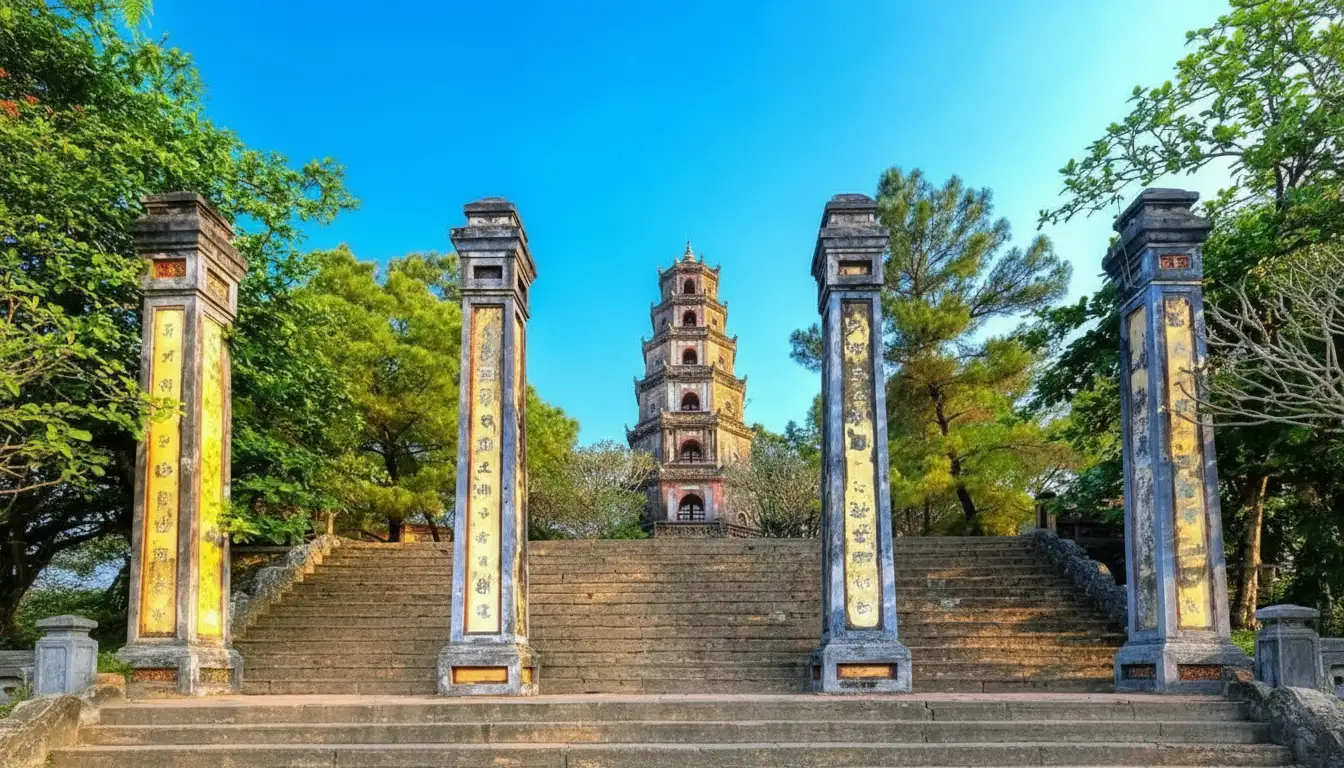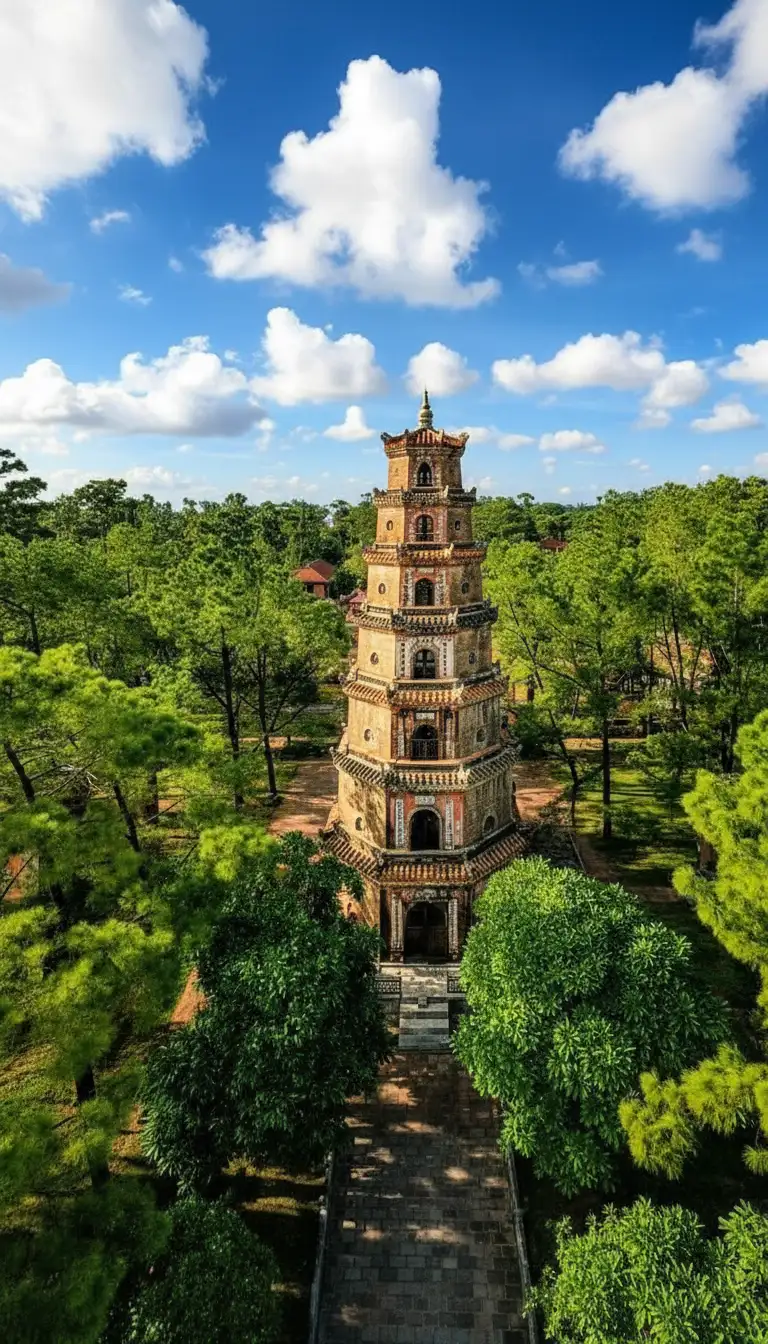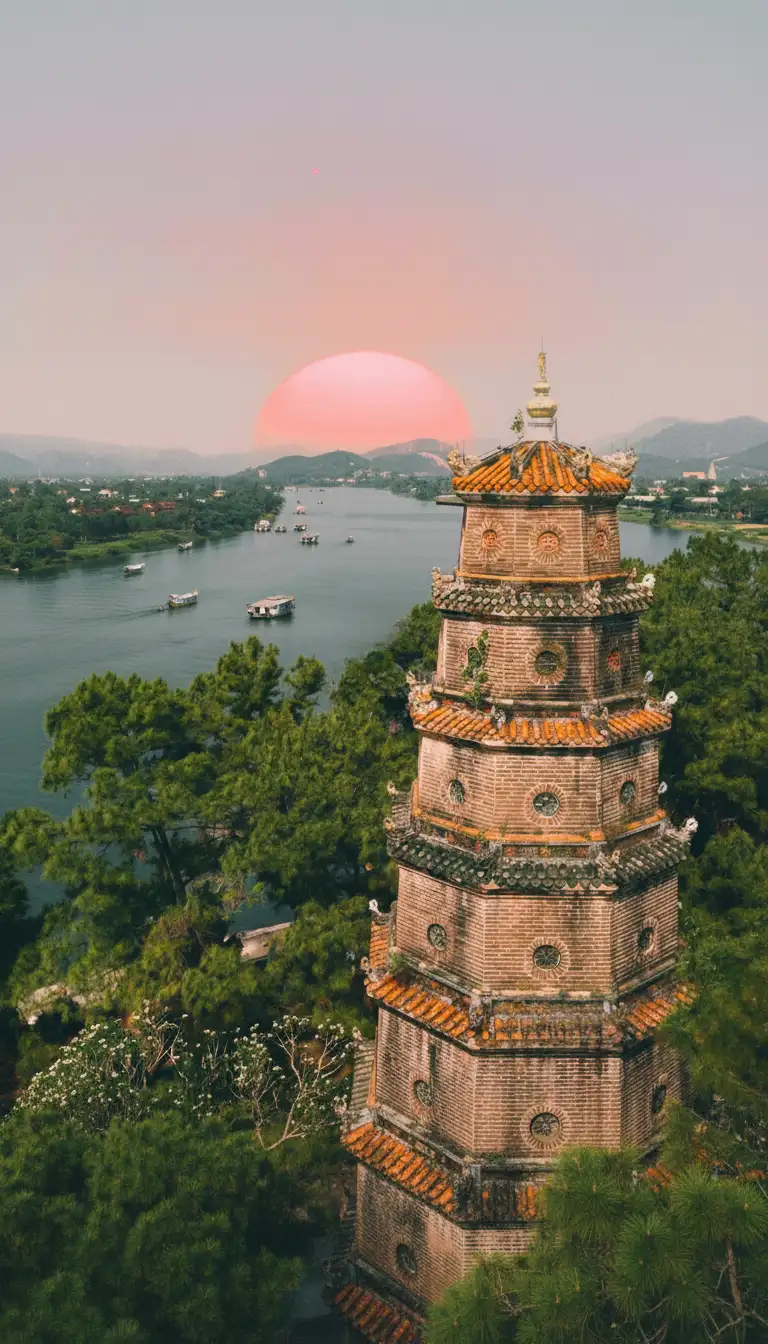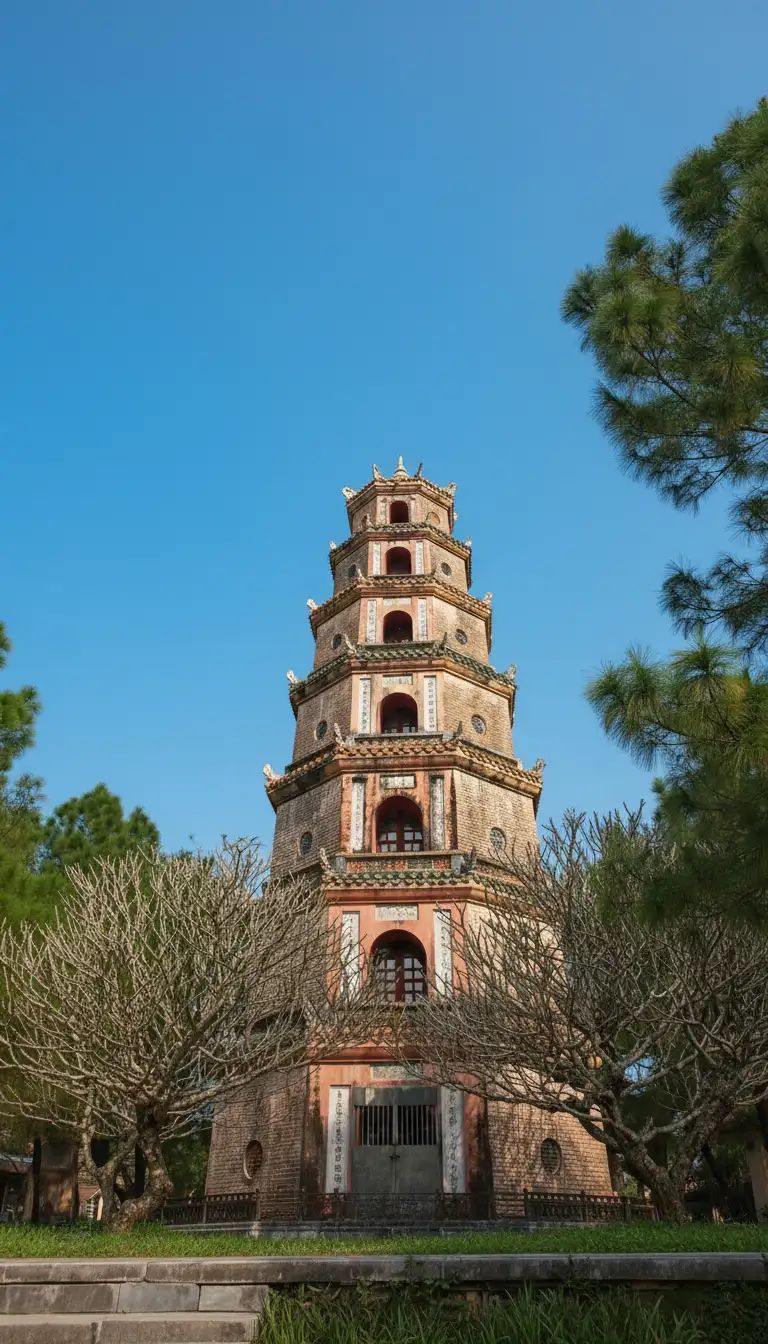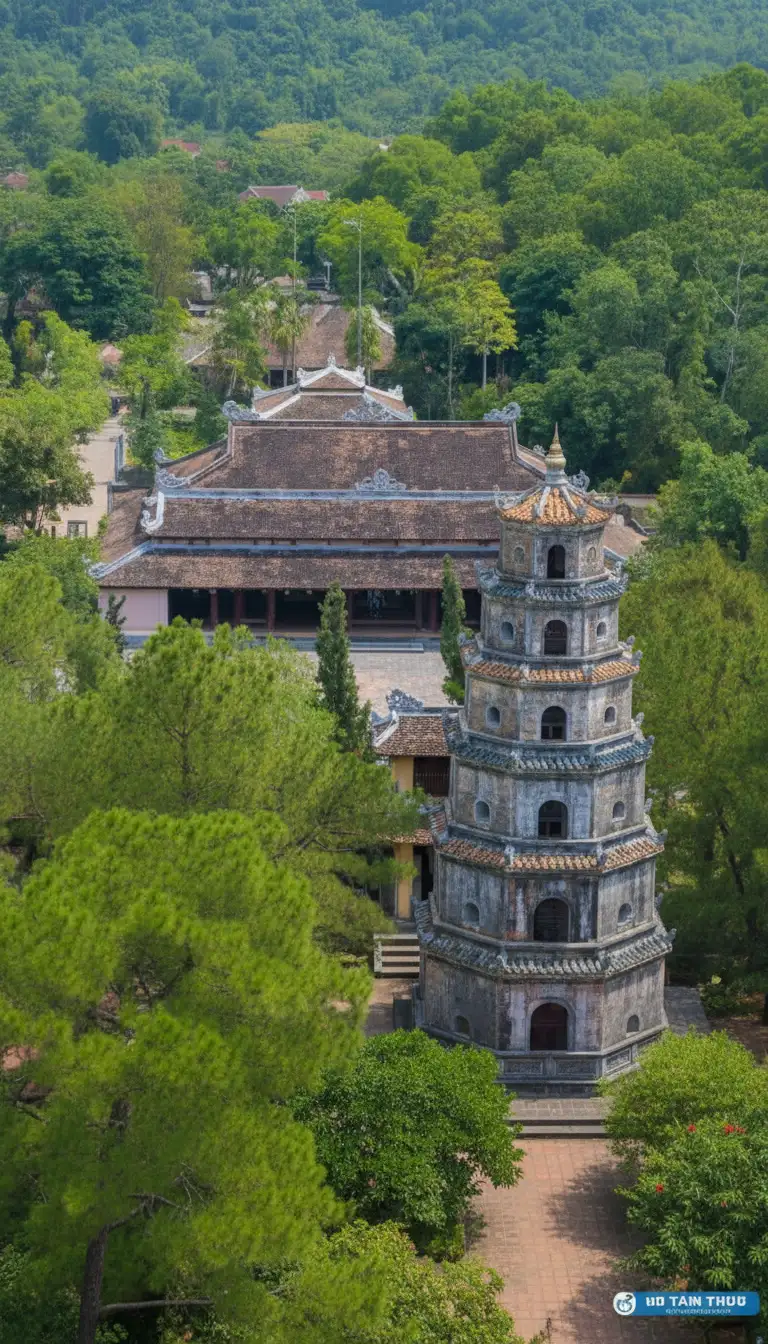Quick Facts
| Data Field (Title) | Content | Icon/Note |
|---|---|---|
| Vietnamese Name | Chùa Thiên Mụ | Also known as Linh Mụ Pagoda. |
| English Translation | Pagoda of the Celestial Lady | Named after a local legend involving a mysterious woman on the hill. |
| Location | Huế City, Thừa Thiên Huế Province, Central Vietnam. | Strategically situated on the northern bank of the Perfume River (Sông Hương). |
| Founded | 1601 by Lord Nguyễn Hoàng. | The oldest and most iconic pagoda in Huế. |
| Significance | A key spiritual and historical symbol of Huế; an active Buddhist monastery and architectural masterpiece. |
I. Overview: The Soul of Huế
The Legend of the Lady
The name Thiên Mụ (Celestial Lady) originates from a local legend. It is said that an old lady, dressed in red and blue, appeared on the hill where the pagoda now stands. She prophesied that a lord would arrive and build a temple on the sacred spot to bring prosperity to the country. Lord Nguyễn Hoàng, upon hearing the prophecy, ordered the construction of the pagoda in 1601, making it a foundational spiritual landmark of the Nguyễn Lords’ capital.
Iconic Architecture
The pagoda is renowned for its majestic setting and distinctive structures:
Phước Duyên Tower: The most famous symbol of the pagoda and Huế. This magnificent seven-story octagonal tower, built in 1844 by Emperor Thiệu Trị, represents the seven incarnations of Buddha.
Đại Hùng Shrine: The main sanctuary, which houses a massive bronze bell (weighing over 2 tons) and a trio of impressive Buddha statues representing the past, present, and future.
Tomb of Venerable Thích Đôn Hậu: A respected former Abbot whose tomb is housed within the complex, symbolizing the spiritual continuity of the site.
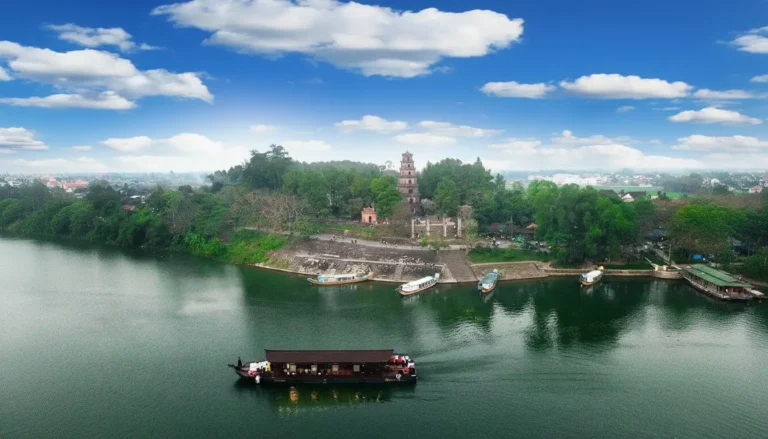
II. Spiritual and Cultural Events
While Chùa Thiên Mụ does not host a single, fixed-date “festival” like other Vietnamese cultural events, it remains an active center for Mahayana Buddhism, hosting continuous rituals and significant celebrations throughout the year.
Daily Rituals
Visitors can often witness the serene daily life of the monks and observe the rhythmic, peaceful ceremonies:
Morning & Evening Chanting: Monks perform daily prayers, with the deep, resonant toll of the giant bell often audible far down the Perfume River, believed to “awaken souls” and spread peace.
Incense Offering: Laypeople and visitors participate in the simple yet profound act of lighting incense to pray for peace, health, and good fortune in the main halls.
Major Buddhist Celebrations
The pagoda is a lively hub for major Vietnamese Buddhist holidays:
Vesak (Buddha’s Birthday) (Tháng Tư Âm Lịch): Held on the 15th day of the 4th lunar month, the pagoda lights up with thousands of lanterns and hosts large gatherings for ceremonies and Dharma talks, attracting thousands of devotees.
Ullambana (Ghost Festival/Filial Piety Day) (Tháng Bảy Âm Lịch): Observed on the 15th day of the 7th lunar month, this is a day for honoring ancestors and showing gratitude to parents, with special rituals for the deceased.
Tết (Lunar New Year): Ceremonies are held on New Year’s Eve and throughout the first days of the year, with monks offering blessings for peace and prosperity for the coming year.
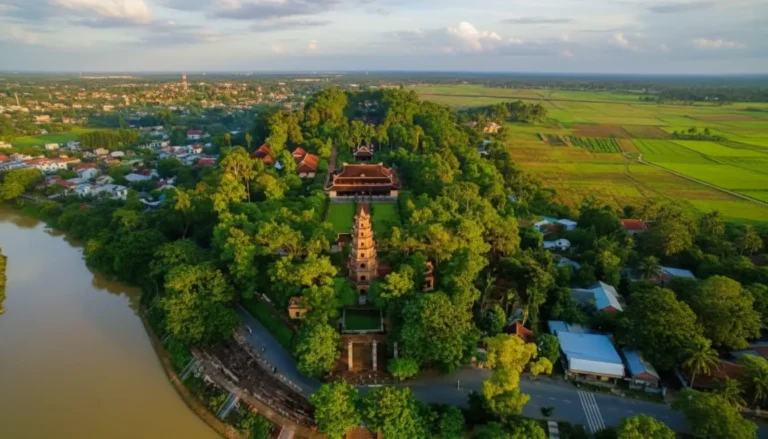
III. Visitor Information
| Guide Field | Details |
|---|---|
| Best Time to Visit | Early Morning (6:00 AM - 8:00 AM) for serenity, or Late Afternoon (5:00 PM - 6:00 PM) to capture the iconic sunset over the Perfume River. |
| How to Get There | The most scenic way is by Dragon Boat (about 30 minutes from Hue city center) down the Perfume River. Alternatively, use a taxi, motorbike, or bicycle. |
| Admission | Free of Charge. Visitors are encouraged to dress modestly and respectfully. |
| Essential Etiquette | Dress Modestly (cover shoulders and knees). Remove hats and shoes when entering prayer halls. Maintain quiet and respectful behavior, especially during chanting. |
